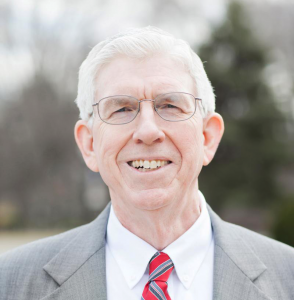Jaroslav Pelikan remarked concerning the additions to the Nicene Creed as adopted at Constantinople, “This creedal ‘change’ resulted in the new measure of balance, if not quite of symmetry, among the confessions of the three divine hypostases that define Christian orthodoxy from then on” (Pelikan, Credo, 25). If that is so, and it is, and if the Council at Constantinople in 381 gave a final blow to the hopes of the Arians to achieve a status of acceptability within the pale of orthodoxy, and it did, it did not give a detailed synopsis of the relation of the uncreated to the created in the person of Christ.
That the eternally generated Son of God had taken to himself real humanity was now beyond dispute. The manner of this assumption of the human nature, however, and the appropriate words to use in asserting this truth still seemed to elude a clear, biblically defensible, theologically sustained definition. Nestorius, bishop of Constantinople, in response to a Mary-cult developing in his diocese, found it absurd to use the word theotokos, God-bearer, for Mary. He preferred the term christotokos, Christ-bearer. This set in motion an extended and vigorously argued discussion on how two unalterable natures, the divine and the human, dwell within the single-personhood of Jesus Christ. If Mary was the mother of that single person, what would be the implication of resisting the term theotokos?
While firmly sustaining both the human and the divine, conscientiously resisting the tendency to fuse, and lose, the human into the divine nature, Nestorius was perceived as erring on the other side. It seemed that he maintained such an individuality in the human nature that he viewed the union as one only of undivided moral purpose, or a divine indwelling of the man born of Mary, a kind of high adoptionist Christology. As he was perceived, Nestorius fell short of the doctrine of the hypostatic union, that is, this one single person that was born of Mary from the moment of conception and every moment subsequent to his conception was both the eternal Son of God and the son of Mary, descended from David.
Cyril, bishop of Alexandria, kept the pressure on Nestorius insisting that he anathematize the positions attributed to him, including, “If anyone does not confess that Emmanuel is God in truth, and therefore the holy Virgin is theotokos—for she bore in the flesh the Word of God become flesh—let him be anathema” (Hardy, Christology of the Later Fathers, 353). Unable to consent to this anathema, Nestorius was exiled after the Council of Ephesus (431).
Cyril, however, made a mistake in terminology in his series of twelve ideas that must be anathematized. In one he wrote, “If anyone divides the hypostases in the one Christ after the union, joining them only by a conjunction in dignity, or authority or power, and not rather by a coming together in a union by nature, let him be anathema.” Cyril’s statement of what should be rejected was clear and accurate. The phrase “union by nature,” however, did not exactly establish the positive side of the proposition as clearly as was needed. The concept reflected in this language fueled an aggressive anti-Nestorian movement and became the foundation for the Monophysite (one nature) and Monothelite (one will) movement. They contended that Christ, because of infinite greatness of his deity, had only one nature. The humanity was like a drop of honey absorbed into the ocean.
In an extreme pressing of the language of Cyril, and in vigorous reaction against Nestorius, Eutyches (378-454), an archimandrite of a monastery in Constantinople, declared, “I confess that our Lord was of two natures before the union, but after the union I confess one nature.” This formula was resisted by Flavian, the bishop of Constantinople, and was condemned by a council in 448 that used the terminology of “two natures,” obviously protecting the full human nature, existing in the one Christ. Eutyches, representing this as Nestorianism, with support from Theodosius II, called a synod in 449 composed of those that revered him and his theological instincts to approve his formula. Flavian’s attempt to attend this council and provide a reasoned objection resulted in his being grossly manhandled so that he died. This synod soon was termed the Latrocinium, Robbers’ Synod, by those that opposed Eutyches.
During the time of this theological punch and counter-punch, the bishop of Rome, Leo, appealed to by both parties in this dispute, gathered enough information about what was at stake to weigh in with unusual clarity and vigor. Before Flavian’s ultimate conflict, Leo wrote him concerning his view of the issue. This letter, so profoundly practical and biblical in its content, has gained a just commendation through the centuries. Known as Leo’s Tome, its argument virtually sealed the issue concerning the relationship of Jesus’ human nature and his divine nature in the single person.
When a new council was called in 451 at Chalcedon to revisit the Eutychian problem, Leo’s letter was read. Many of those in attendance greeted its reading with the words, “Peter has spoken.” This should not prejudice those who reject the papal primacy or the Petrine succession of Rome against the power of the reasoning and synthesis of biblical truths present in this document. Edward Hardy wrote, “It is a fine specimen of the straightforwardness and clarity of the Latin mind—as also of the Western approach to the mysteries of Christianity from the facts of faith rather than the speculations of philosophy” (Hardy 359). To that exegetical and theological production we will turn in the next installment on this issue.
























